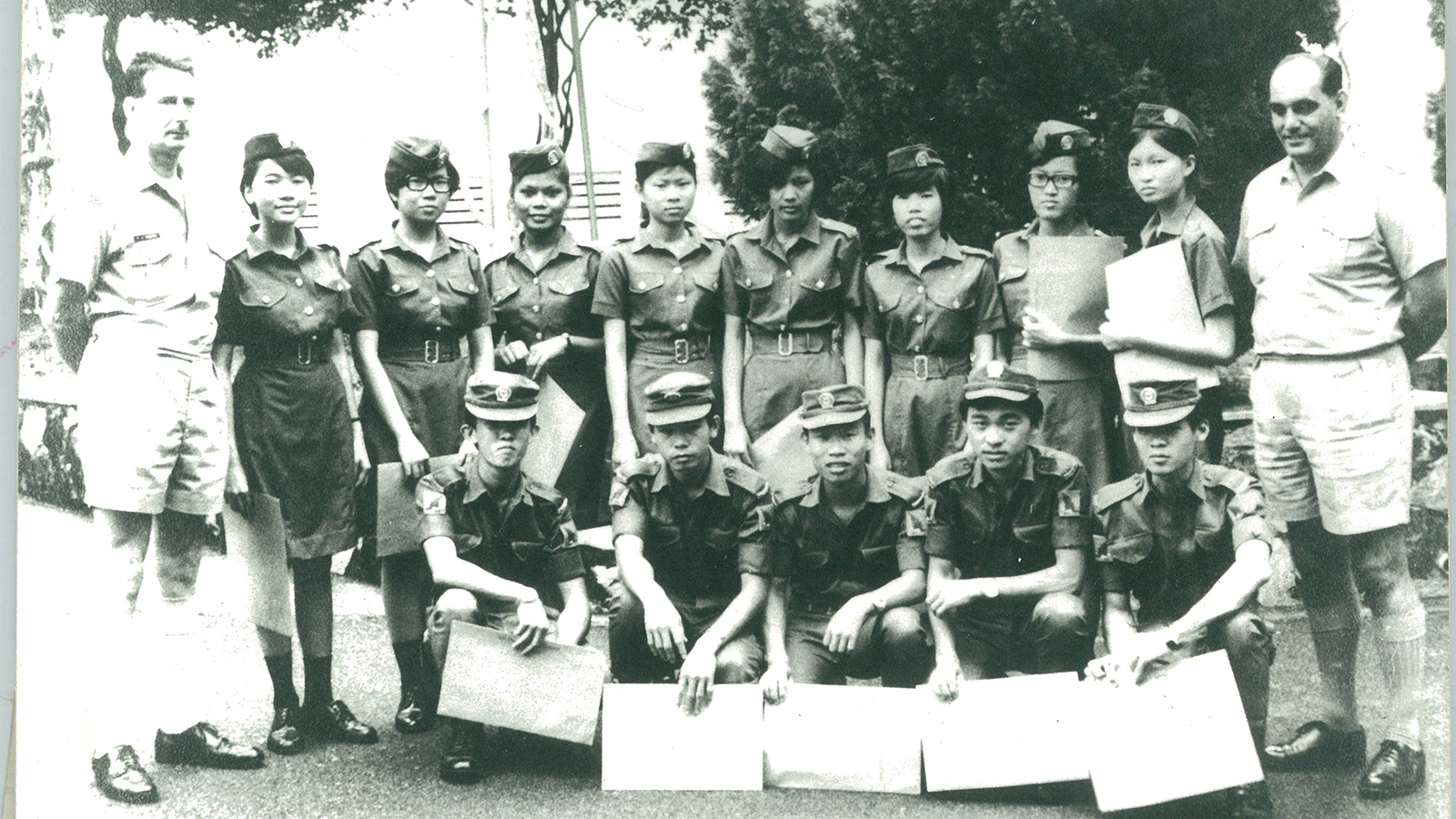1969/03 - Training our Pioneer Air Defenders
1969
In 1969, SADC trained its first local Air Traffic and Air Defence Controllers, aiming for self-reliance before the RAF's full withdrawal.
The training of specialist personnel to control air traffic and air defence missions was essential in the setting up of the SADC. The pioneer batches of Air Traffic and Air Defence Controllers were sent to Britain to be trained by the Royal Air Force (RAF). Seletar Tower had its first operational staff in March 1969.

The SADC’s first local Air Traffic and Air Defence Controllers in Seletar Tower.

Pioneer SADC officers (seated in the front row) who attended the Flight Controller Course from November 1969 to January 1970, at RAF Bawdsey in Suffolk.

The SADC's pioneer Air Defence Operators with their RAF instructors in the late 1960s.

Pioneer members of the SADC's Air Defence Radar Unit with RAF Wing Commander J. Le Cheminant and LTC Tan Jer Meng.

SADC trainee pilots and their British colleagues with the Chipmunk trainer aircraft at RAF Chivenor.

A notebook used in the RAF for training in 1970.

A testimonial for an RAF serviceman dated 19 July 1970.

A certificate issued by the SADC on 8 September 1972 for completing the FTS Weapons Course.

A certificate issued by the RAF Far East Air Force's Survival and Parachute School in 1970.

An SADC recruitment brochure.

Participants of the first Advanced Forward Air Control course in 1980.

Graduates of the first Ground Logistics Officer Course in 1981.

The first batch of Air Maintenance Officers in 1982.

The first batch of Air Operations and Communications Officers in 1984.

The first batch of Air Executive Officers in 1982.

CPT Cyril Walter Kerr was the first SADC pilot to qualify as a pilot attack instructor.

CPT Gary Yeo Ping Yong was the first SADC pilot to qualify as a flying instructor.

Graduates of the first Air Logistics Officer Course in 1981.

Graduates of the first Basic Forward Air Control Course in 1981.
“You are the eyes and ears of our Air Force. It’s a job that is done quietly and unobtrusively. All the rest of the defences of the island are useless without radar.”
George Bogaars, Permanent Secretary, Ministry of Interior and Defence, 1968 on the importance of having ground-based radar operators in the fledgling SADC
“I think we are moving on the right lines. We need to put in more effort to improve ourselves, particularly the technical competence of local personnel. This means we should place high priority in supporting technical training in air traffic. The previous practice of sending large numbers of personnel overseas, even for courses of a few weeks, will cease and the training effort must be carried out here. This means hard work for everybody, but the end result will be that we shall be self-reliant in a crucial field.”
Dr Goh Keng Swee, Minister for Defence, 1967 on the importance of boosting the quality of training in Singapore
“When we took over Seletar Tower in early 1969, it was the first operational unit to be commanded by a Singaporean officer, LTA R. Ramakrishnan. We only had two aircraft radios to do air traffic control. It was literally starting from scratch. The challenge was to have sufficiently trained and qualified ATC officers and men to manage the three airfields, Tengah, Changi, and Sembawang, as well as the joint military-civil air traffic control centre, then located at Paya Lebar, by the time the RAF left. But we did it all, so that by the end of 1971, all ATC units on the island were functioning under SADC, albeit with the assistance of some seconded and contracted British officers.”
LTC (Ret) Prasad Kumar Menon, Airspace Consultant, Air Operations Department, 2008 who was one of the 37 pioneering officer cadets and later ran the first Air Traffic Control School at Tengah Air Base in 1969
.png)